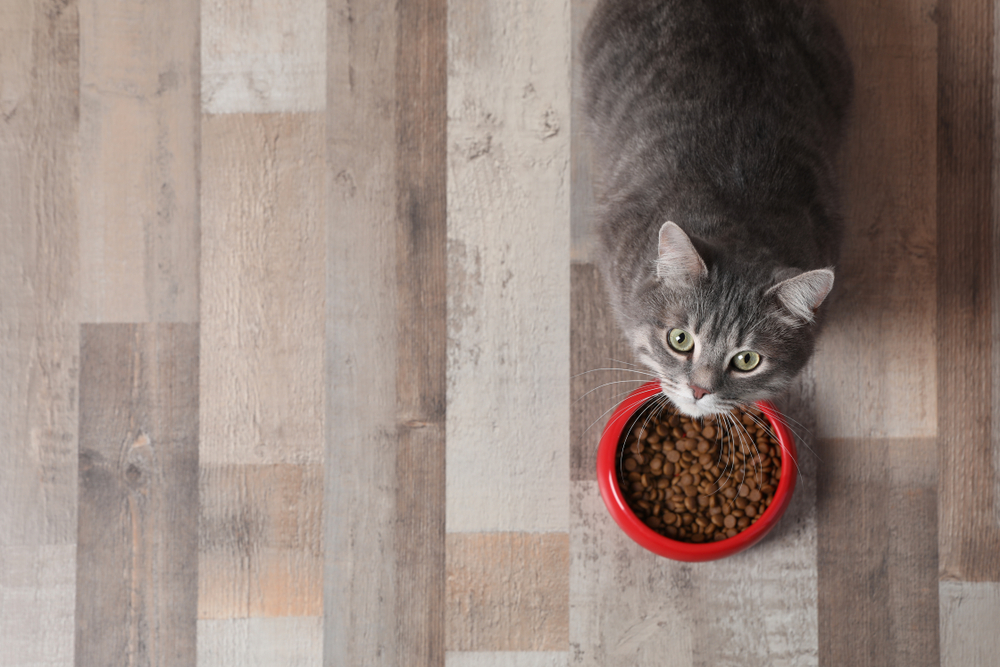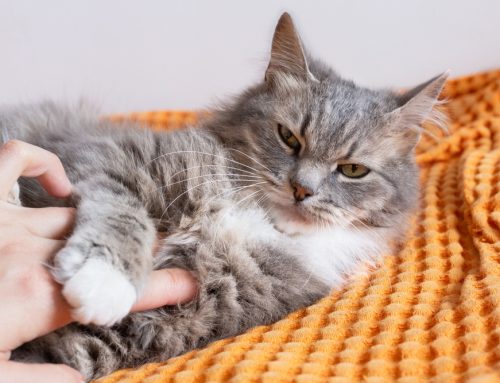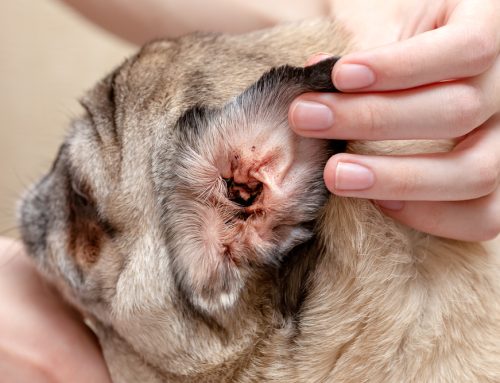At Countryside Veterinary Hospital, we see diabetic pets on a regular basis, and especially appreciate working closely with pet owners to help their four-legged friends live a long, good quality life. Here are answers to some common questions about diabetes and pets.
Question: What is diabetes?
Answer: Diabetes occurs when the body cannot use glucose normally. Glucose is a type of sugar obtained from digestion, and one of the main energy sources for body tissues. The glucose level in blood is controlled by insulin, which is a hormone produced by the pancreas. Insulin unlocks the door for body tissues to receive glucose, and a lack of insulin causes glucose to build up in the blood rather than be used as fuel for the body.
Q: What causes diabetes in pets?
A: A pet can become diabetic for no apparent reason, but a major cause is obesity, which impairs the insulin-producing cells in the pancreas, and makes body tissues less sensitive to insulin. Pancreatitis (i.e., inflammation of the pancreas) can also sometimes lead to diabetes in pets. Certain dog and cat breeds are more predisposed to diabetes, and long-term steroid use can potentially trigger diabetes in pets.
Q: What are diabetes signs in pets?
A: The four main signs of diabetes are:
- Increased thirst
- Increased urination
- Increased appetite
- Weight loss
These signs occur because high blood glucose levels draw water from the body, leading to dehydration and excessive thirst. The kidneys, which normally filter blood and retain water for the body, can become overwhelmed in a diabetic pet, and spill excess water and glucose into the urine. Without insulin to help tissues access glucose, a diabetic pet becomes extremely hungry and loses weight as the body breaks down fat and muscle for fuel. This alternative fuel breakdown mechanism can lead to diabetic ketoacidosis, which is a serious medical condition requiring hospitalized care.
Q: How is diabetes diagnosed in pets?
A: Our Countryside Veterinary Hospital team will examine your pet, while taking a thorough history to determine if their signs are consistent with diabetes. Laboratory test results showing high glucose levels in blood and urine can confirm a diabetes diagnosis. We may perform further testing to look for other medical conditions, such as pancreatitis or ongoing infections, that can affect diabetes treatment success.
Q: How is diabetes managed in pets?
A: The goal of managing a diabetic pet is to keep their blood glucose levels near normal. The first step is usually insulin injections at home, which may sound daunting, but our team can provide detailed instructions and demonstrate how to give injections to your dog or cat. We will also recommend a specific diet and exercise regimen, and set up a follow-up testing schedule. At-home care of a diabetic pet includes closely following our insulin administration and feeding instructions, and contacting us if you notice any changes in your pet’s appetite, energy level, thirst, or urination.
Diabetes, and its treatment, differs in dogs and cats.
- Diabetes in dogs — Dogs generally have Type I diabetes, which means the pancreas produces no insulin, so they will require long-term insulin injections for glucose regulation. Diet modification, such as a high-fiber prescription diet, can help maintain a more consistent blood glucose level by slowing glucose absorption and making body tissues more insulin-sensitive.

- Diabetes in cats — Cats tend to have Type II diabetes, where the pancreas produces some, but not enough, insulin. Most cats will initially require insulin injections, but Type II diabetes can resolve, if the pancreas resumes its insulin-secreting ability and body tissues become more insulin-sensitive. Some cats may go into remission, while others will need long-term insulin injections. Diabetic cats do better with a high protein/low carbohydrate prescription diet to help maintain a more regulated glucose level.
In addition to at-home monitoring, regular blood and urine testing is essential to ensure diabetic pets are receiving the appropriate insulin dose. Life-threatening drops in blood glucose levels can occur if a diabetic pet is given too much insulin (e.g., a pet does not eat their meal, or a cat has gone into diabetic remission). A diabetic pet showing low blood glucose signs, such as lethargy, weakness, loss of coordination, trembling, or seizures, must be seen immediately by a veterinarian.
The Countryside Veterinary Hospital team understands that managing a diabetic pet may initially seem complex and overwhelming, but we can walk you through the process so your pet’s treatment becomes part of your daily routine. Don’t hesitate to contact us if your pet is showing diabetes signs, or if you have questions about your diabetic pet’s care.








Leave A Comment